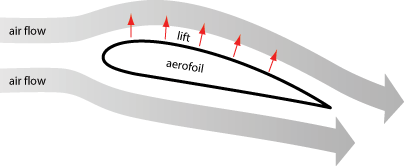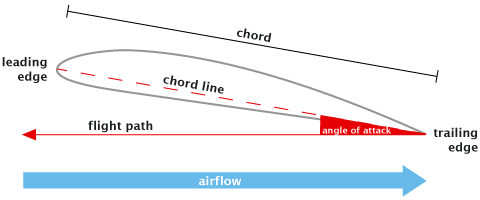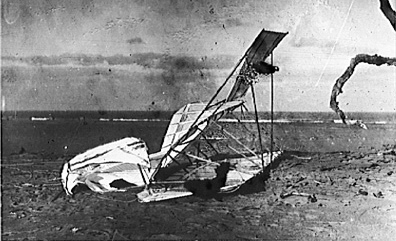Air flows over and under the wings of an aeroplane as it moves. The wings are designed to make the air travelling over the top surface move faster than the air moving under the wing, and this has the effect of lifting the wing up.

The shape of a wing viewed from the side is known as an aerofoil (or air foil), and the angle between the aerofoil and the direction in which the plane is moving is described as the angle of attack.

Changing the angle of attack alters the amount of lift produced by the wing and can also affect the pilot's control of the plane. If the angle is increased too much then the wing stalls, and the plane is likely to crash. Otto Lilienthal, one of the early flight pioneers, had been killed when his glider stalled after being hit by a gust of wind. This happened in 1896 just as the Wright Brothers were beginning their experiments, and it was one of the major problems that concerned the Wright Brothers as they set about designing their Flyer.

The next section is concerned with the way that air moves around an aerofoil, and what happens when it stops flowing smoothly